 Facebook
Facebook
 X
X
 Instagram
Instagram
 TikTok
TikTok
 Youtube
Youtube
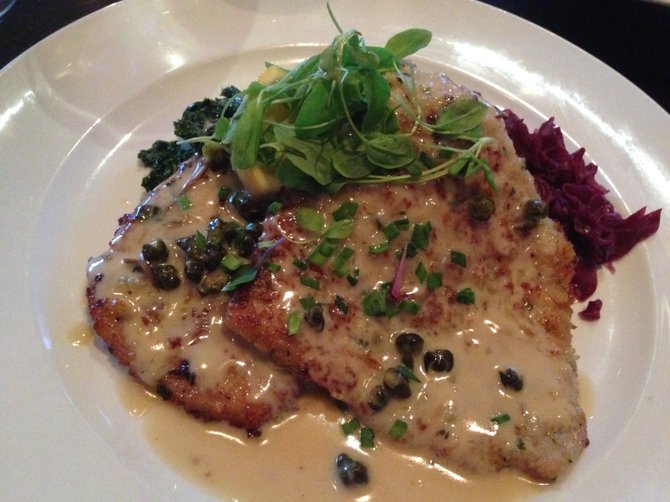
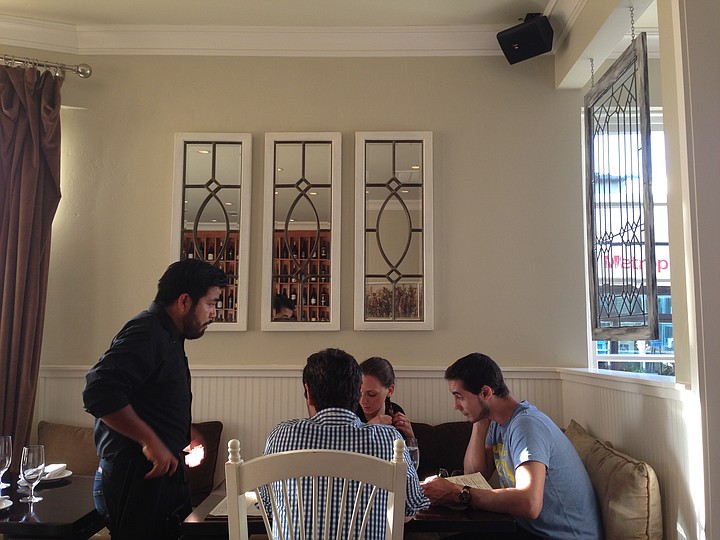
Around Father’s Day, I decided to take my father-in-law out for a meal. Just the two of us.
He’s a great guy who does a lot of stuff for my kids so I wanted to take him out for a nice meal.
I decided to take him to the Red Door Restaurant & Wine Bar, a farm-to-table place in Mission Hills.
Farm-to-table is one of those words that foodies salivate over because it means the food comes directly from a particular farm. From what I hear, the owner grows many of the veggies herself.
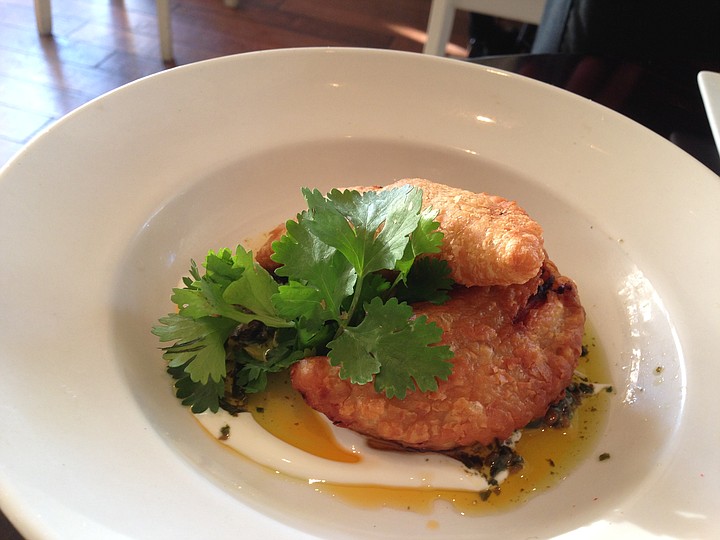
My dad-in-law didn’t quite get it.
“Doesn’t all food come from a farm?”
He did get this important detail: “You don’t have to pay for the meal.”
“Oh, I like that,” he said.
The Red Door has been around for a few years, but I hadn’t been to it in this new incarnation. Previously, it had been the location of Parallel 33, a fusion restaurant that may have been ahead of its time.
However, after walking into the Red Door, I quickly figured out why it has succeeded where Parallel 33 didn’t: It feels like someone’s home — if that home had a lot of tables, chairs, and waiters walking around.
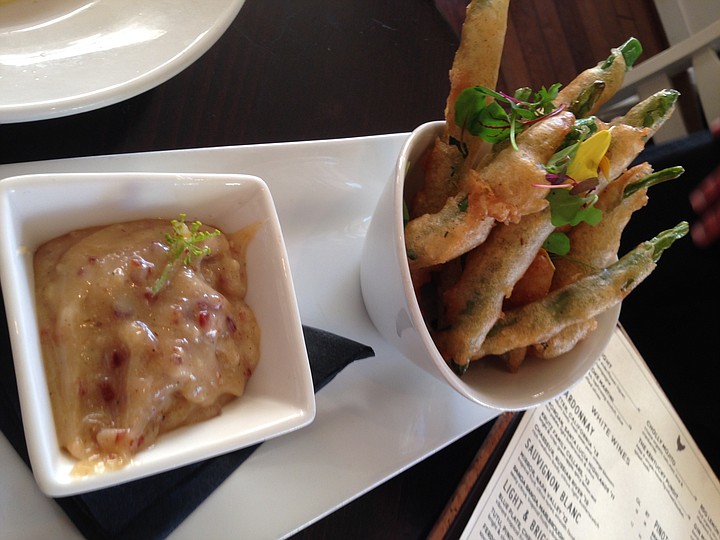
Parallel 33 was a concept restaurant where everything was from a country located on the 33rd parallel of the globe. Concept restaurants are great, but location is key. They work better in places with lots of tourist traffic. Restaurants in neighborhoods like Mission Hills need to rely on locals, so they need to have great food that is interesting without looking too much like an experiment.
Like Bo-beau in La Mesa, the Red Door has this mastered: delicious, interesting menu items that are still things you could crave on a regular basis, so much so that you’d consider the place your other dining room.
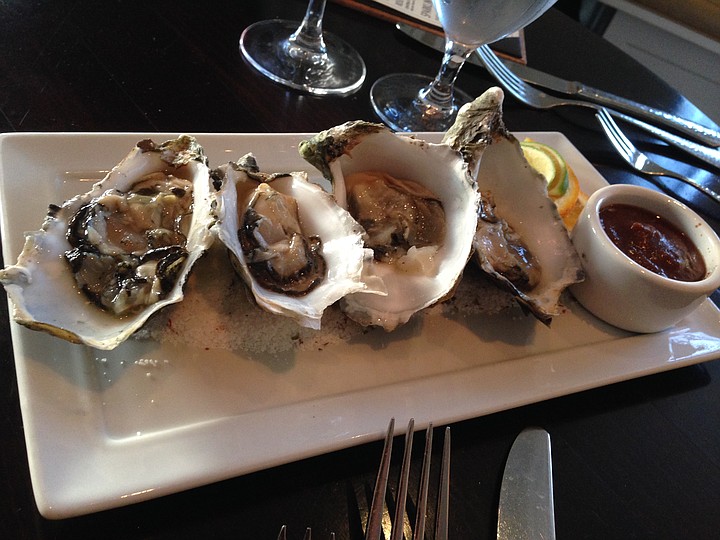
We started out with deep-fried green beans served with a sweet bacon aioli dipping sauce. Damn, it was good. But so was the empanada filled with root beer-braised pork.
The root beer braise isn’t as weird as it sounds, I explained to my father-in-law.
“In Mexico, they use soda as a marinade on carnitas to help caramelize it,” I said. “What do you think?”
“It’s good,” he helpfully added.
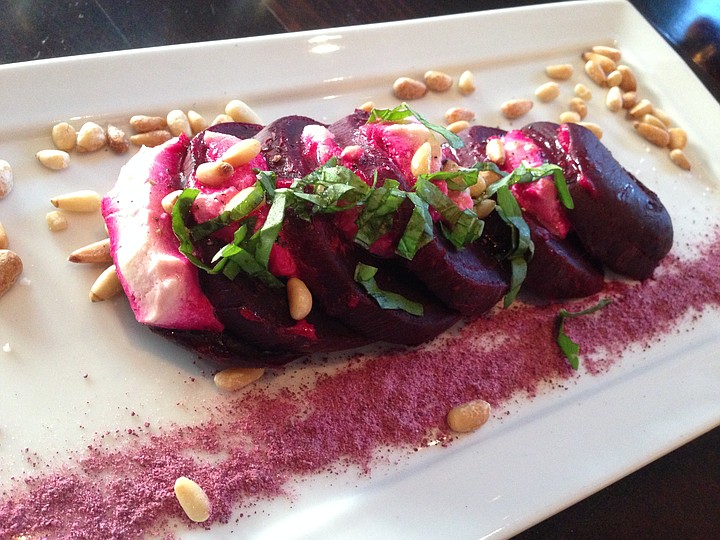
The oysters we ordered were fresh and briny. Ordinarily, I’d be raving about them, but I was knocked out by the beet and goat cheese salad, which came highly recommended.
“I’m not totally big on beets,” I admitted to my pop-in-law. “But these make me feel I’ve been missing something.”
“They’re good,” he said.

The beets I’ve tried in the past had a dirt-like quality that i’m supposed to appreciate as earthiness. But if I want dirt, I can eat mud. The goat cheese and orange made the “earthiness” inherent in the beets more of a grounding agent that added complexity to the dish.
On a whim, we also got some bacon-wrapped thymus gland, I admit, just so I could text my vegetarian wife, “hey, we just ate thymus gland.”
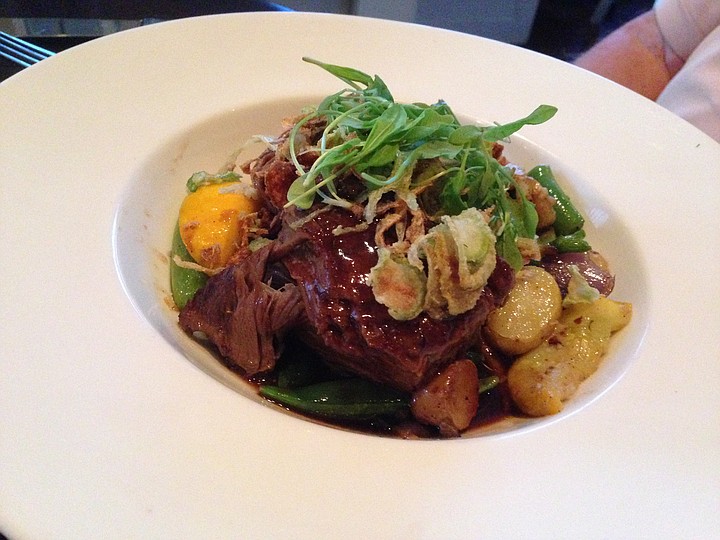
Her shocked reaction was great, but not as good as the thymus gland. It was sweet, chewy, and blended nicely with the bacon, which is also an organ meat.
For our entrees, I got the pork schnitzel in lemon-caper sauce with Peruvian potatoes and sautéed chard. My father-in-law chose the short ribs, as he had good memories of the dish growing up in Wisconsin.
This was obviously a different preparation, as farmers back during World War II didn’t feel the need to mention the pigs were “humanely raised.”
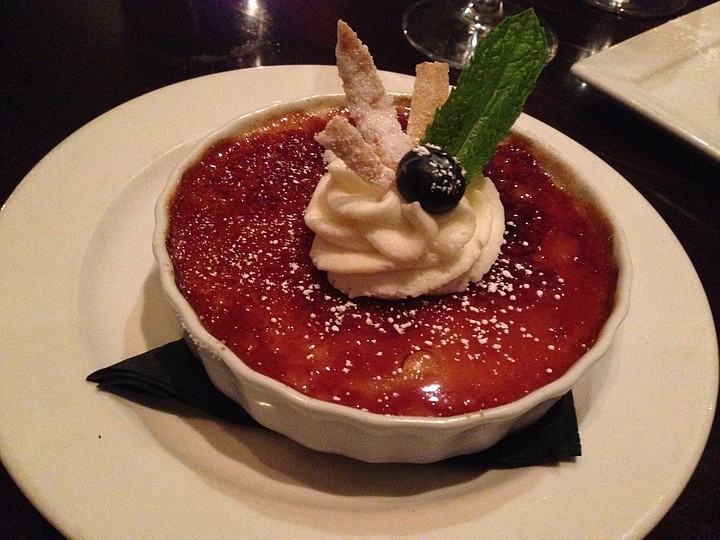
Served in a cabernet demi-glace with fingerling potatoes and veggies including fried fennel, he was happy — almost enough to forgive me for marrying his daughter. Almost.
“It’s good,” he said.
For dessert, we split the crème brûlée of the day, which was lavender-flavored, and a mini banana cream pie.
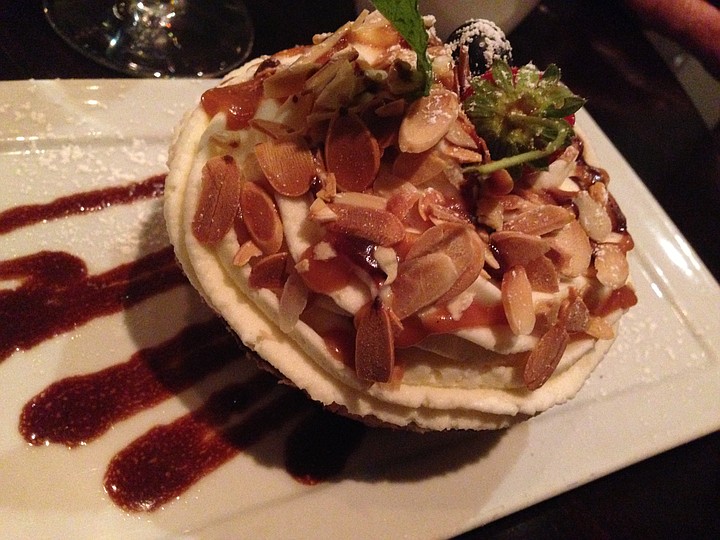
At the time, I thought the banana cream pie was the favorite, as it was creamy and crispy at the same time.
But as I write this, I’m really craving a bite of the crème brûlée, as the lavender added a nice, soft, fruity flavor to the dish.
I would love to come back to the Red Door soon. I think for San Diego’s food scene to evolve, every neighborhood needs a place like this where locals can get good meals without having to feel like they’re a lab experiment.



Around Father’s Day, I decided to take my father-in-law out for a meal. Just the two of us.
He’s a great guy who does a lot of stuff for my kids so I wanted to take him out for a nice meal.
I decided to take him to the Red Door Restaurant & Wine Bar, a farm-to-table place in Mission Hills.
Farm-to-table is one of those words that foodies salivate over because it means the food comes directly from a particular farm. From what I hear, the owner grows many of the veggies herself.

My dad-in-law didn’t quite get it.
“Doesn’t all food come from a farm?”
He did get this important detail: “You don’t have to pay for the meal.”
“Oh, I like that,” he said.
The Red Door has been around for a few years, but I hadn’t been to it in this new incarnation. Previously, it had been the location of Parallel 33, a fusion restaurant that may have been ahead of its time.
However, after walking into the Red Door, I quickly figured out why it has succeeded where Parallel 33 didn’t: It feels like someone’s home — if that home had a lot of tables, chairs, and waiters walking around.

Parallel 33 was a concept restaurant where everything was from a country located on the 33rd parallel of the globe. Concept restaurants are great, but location is key. They work better in places with lots of tourist traffic. Restaurants in neighborhoods like Mission Hills need to rely on locals, so they need to have great food that is interesting without looking too much like an experiment.
Like Bo-beau in La Mesa, the Red Door has this mastered: delicious, interesting menu items that are still things you could crave on a regular basis, so much so that you’d consider the place your other dining room.

We started out with deep-fried green beans served with a sweet bacon aioli dipping sauce. Damn, it was good. But so was the empanada filled with root beer-braised pork.
The root beer braise isn’t as weird as it sounds, I explained to my father-in-law.
“In Mexico, they use soda as a marinade on carnitas to help caramelize it,” I said. “What do you think?”
“It’s good,” he helpfully added.

The oysters we ordered were fresh and briny. Ordinarily, I’d be raving about them, but I was knocked out by the beet and goat cheese salad, which came highly recommended.
“I’m not totally big on beets,” I admitted to my pop-in-law. “But these make me feel I’ve been missing something.”
“They’re good,” he said.

The beets I’ve tried in the past had a dirt-like quality that i’m supposed to appreciate as earthiness. But if I want dirt, I can eat mud. The goat cheese and orange made the “earthiness” inherent in the beets more of a grounding agent that added complexity to the dish.
On a whim, we also got some bacon-wrapped thymus gland, I admit, just so I could text my vegetarian wife, “hey, we just ate thymus gland.”

Her shocked reaction was great, but not as good as the thymus gland. It was sweet, chewy, and blended nicely with the bacon, which is also an organ meat.
For our entrees, I got the pork schnitzel in lemon-caper sauce with Peruvian potatoes and sautéed chard. My father-in-law chose the short ribs, as he had good memories of the dish growing up in Wisconsin.
This was obviously a different preparation, as farmers back during World War II didn’t feel the need to mention the pigs were “humanely raised.”

Served in a cabernet demi-glace with fingerling potatoes and veggies including fried fennel, he was happy — almost enough to forgive me for marrying his daughter. Almost.
“It’s good,” he said.
For dessert, we split the crème brûlée of the day, which was lavender-flavored, and a mini banana cream pie.

At the time, I thought the banana cream pie was the favorite, as it was creamy and crispy at the same time.
But as I write this, I’m really craving a bite of the crème brûlée, as the lavender added a nice, soft, fruity flavor to the dish.
I would love to come back to the Red Door soon. I think for San Diego’s food scene to evolve, every neighborhood needs a place like this where locals can get good meals without having to feel like they’re a lab experiment.
Comments